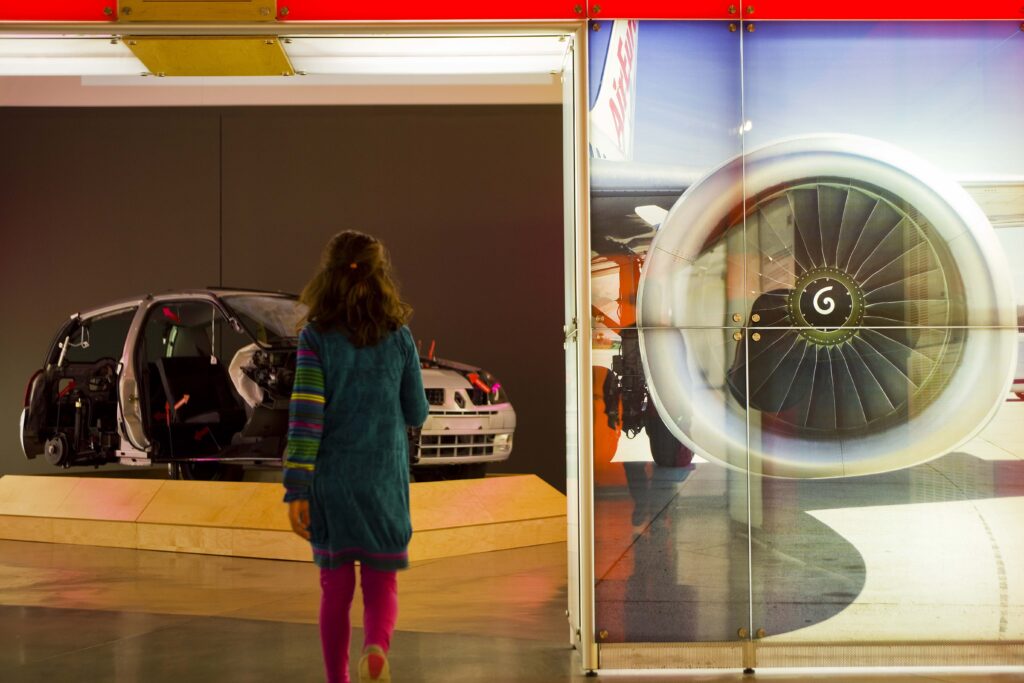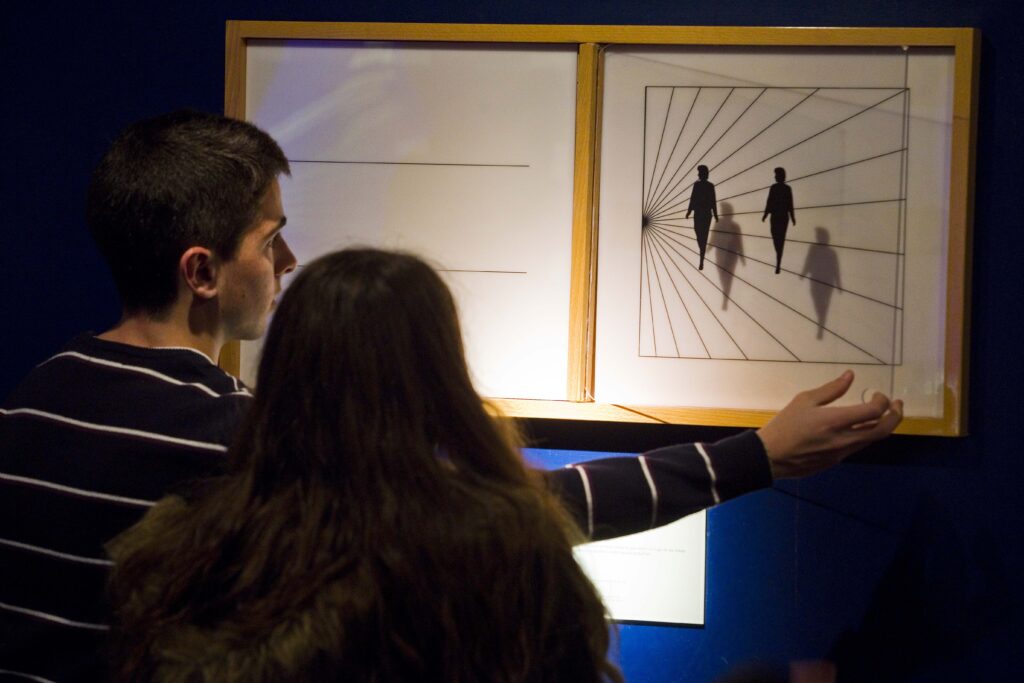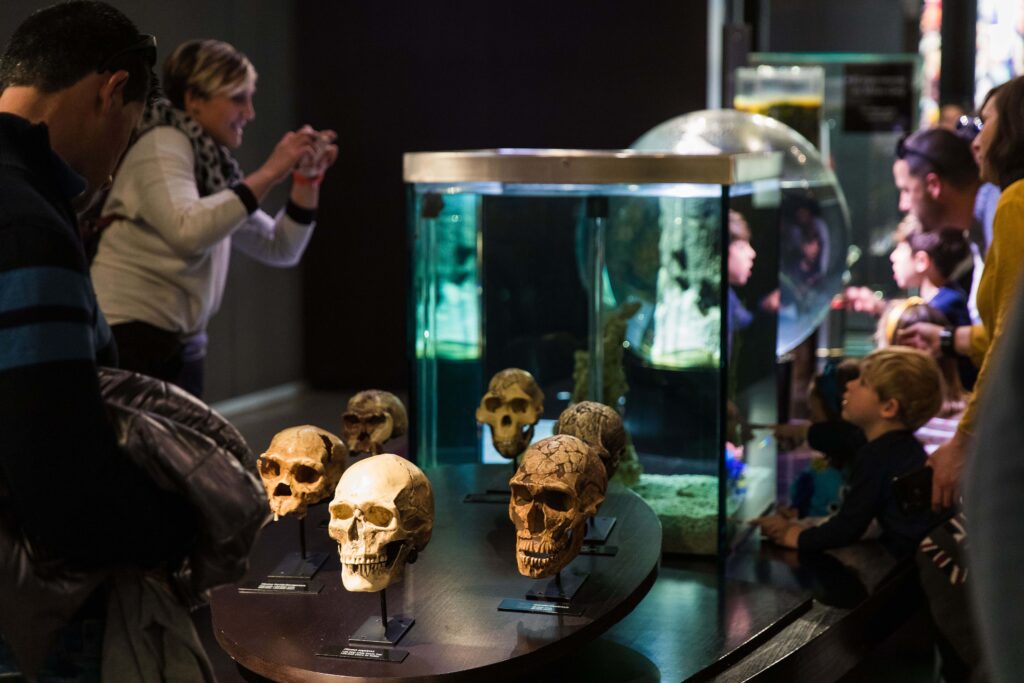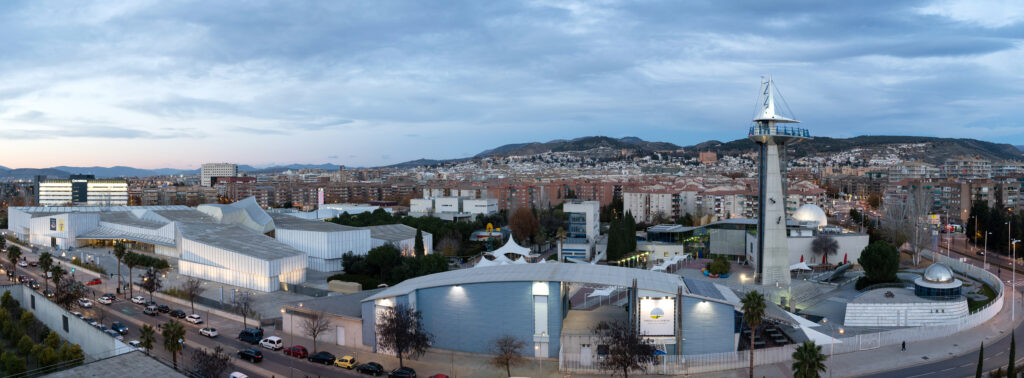Introduction
Nestled just a short walk from the historic heart of Granada, the Science Park (Parque de las Ciencias) stands as a beacon of interactive scientific exploration, spanning an impressive 70,000 m^2. Since its inauguration in 1995, it has not only become the most visited museum in Andalusia but has also welcomed over 11 million visitors, firmly establishing itself as a leading center for scientific outreach in southern Europe.
The park’s significance in Granada is multifaceted. Beyond its vast expanse dedicated to the wonders of science, it serves as a bridge between the curious minds and the intricate world of scientific phenomena. Managed by a Public Consortium, which includes entities such as the Junta de Andalucía, the City Council of Granada, the Provincial Council of Granada, the Superior Council of Scientific Research, and the University of Granada, the park is a collaborative effort to bring science closer to the public.
Visitors are treated to seven permanent exhibition pavilions, a sprawling 5,000 m^2 space for temporary exhibitions, the mesmerizing Digital Planetarium, and the BioDome, among other attractions. From health, environment, architecture, and literature to physics, chemistry, mechanics, and astronomy, the park offers a diverse range of topics, ensuring there’s something for everyone. Notably, the park also holds the distinction of being the Spanish headquarters for the Educational Office of the European Space Agency (ESA – ESERO).
But the Science Park isn’t just confined to its indoor spaces. It boasts 27,000 m^2 of lush green outdoor areas, dotted with unique exhibits like botanical tours, the Observation Tower, the Tropical Butterfly Garden, and the Astronomical Observatory. Whether you’re navigating the plant maze, gazing at the stars, or watching birds of prey soar in the “Rapaces en Vuelo” workshop, the park’s open spaces offer a refreshing blend of nature and science.
In essence, the Science Park is more than just a museum; it’s an Andalusian oasis of knowledge, a testament to Granada’s commitment to fostering a love for science among its residents and visitors alike.
History of the Park
The Science Park (Parque de las Ciencias) in Granada is not just a museum; it’s a testament to the city’s enduring commitment to education, exploration, and enlightenment. Its origins trace back to the mid-1990s, a period marked by a global surge in interactive learning and the democratization of scientific knowledge.
Inaugurated in 1995, the park was envisioned as a space where science would be accessible to all, irrespective of age or background. The idea was to break away from the traditional, static museum model and create an environment where visitors could engage directly with exhibits, ask questions, and satiate their curiosity.
Over the years, the park has undergone significant evolution, both in terms of its physical size and the breadth of its offerings. From its initial conception as a modest interactive science museum, it has expanded to cover a sprawling 70,000 m^2, making it the most visited museum in Andalusia. This growth was not just in response to its popularity but also a reflection of Granada’s recognition of the importance of scientific literacy in the modern age.
The park’s journey over the years has been marked by continuous innovation. New pavilions were added, each dedicated to a specific field of science, ensuring that the content remained fresh, relevant, and in line with the latest scientific advancements. Collaborations with institutions like the University of Granada and the Superior Council of Scientific Research further enriched its offerings, bringing in expertise and ensuring that the exhibits were not just entertaining but also academically rigorous.
One of the most significant milestones in the park’s history was its collaboration with the European Space Agency, which chose the Science Park as the Spanish headquarters for its Educational Office. This partnership underscored the park’s position not just as a regional attraction but as a player of significance in the broader European scientific community.
In essence, the history of the Science Park is a reflection of Granada’s journey in the realm of science education – a journey marked by ambition, collaboration, and an unwavering commitment to making science accessible to all.

Main exhibitions
The Science Park in Granada is a treasure trove of knowledge, with a plethora of exhibitions that cater to a wide range of interests. Each hall is meticulously designed to provide an immersive experience, making learning both fun and engaging. Here’s a glimpse into some of the standout permanent exhibition halls:
- Planetarium Digital: One of the main attractions, the Planetarium offers visitors a journey through the cosmos. With state-of-the-art digital technology, guests can explore the mysteries of the universe, from the distant galaxies to the intricacies of our solar system.
- BioDomo: A commitment to biodiversity, the BioDomo is a window into the rich ecosystems of the planet. It houses a variety of species and offers insights into the delicate balance of nature. From tropical rainforests to coral reefs, this exhibit is a testament to the beauty and fragility of life on Earth.
- Ventanas a la ciencia (Windows to science): This space is dedicated to the latest scientific advancements and research. It’s a dynamic exhibit, constantly updated to reflect the cutting-edge developments in various scientific fields.
- Recorridos botánicos: An outdoor marvel, this section is dedicated to the world of plants. Visitors can take a leisurely stroll through beautifully curated gardens, learning about different plant species and their significance.
- Observatorio astronómico (Astronomical observatory): For those fascinated by the stars, this observatory offers a chance to gaze into the night sky. With powerful telescopes and guided sessions, it’s a haven for amateur astronomers.
- Taller Rapaces en Vuelo (Raptors in flight workshop): This is a unique experience where visitors can witness majestic birds of prey in action. The workshop not only showcases these birds but also educates visitors about their importance in the ecosystem.
- Jardín de Astronomía (Astronomy garden): A blend of nature and science, this garden is dotted with installations that explain various astronomical phenomena in simple terms. From sundials to interactive exhibits on planetary movements, it’s a space that sparks curiosity.
These are just a few of the many exhibits that the Science Park boasts. Each hall is a testament to the park’s commitment to making science accessible, engaging, and fun for all its visitors. Whether you’re a science enthusiast or just a curious soul, there’s something for everyone at this Andalusian gem.
Interactive experiences
The Science Park in Granada isn’t just a place to observe and learn; it’s a realm where visitors are encouraged to touch, play, and immerse themselves in the wonders of science. The park’s philosophy revolves around the idea that the best way to learn is by doing. Here are some of the must-try hands-on activities and interactive zones that visitors shouldn’t miss:
- Macroscopio pavilion: This space is home to a plethora of interactive modules. From understanding the principles of physics through playful experiments to diving deep into the human genome, the Macroscopio offers a hands-on approach to complex scientific concepts.
- Tocar y jugar (Touch and play): As the name suggests, this zone is all about tactile experiences. It’s especially popular among younger visitors, offering a range of sensory activities that explain scientific phenomena in a fun and engaging manner.
- Water pavilion: Water, the source of life, gets its own dedicated space. Here, visitors can play with interactive fountains, understand the principles of hydrodynamics, and even create mini tornadoes. It’s a splash of fun and knowledge combined!
- Explora – The children’s hall: Tailored for the youngest scientists, this space offers a myriad of activities. Kids can learn about the human body, play with light and sound, and even get a basic understanding of mathematics through interactive games.
- Parque de las Ciencias app: For a more tech-savvy experience, visitors can download the official app of the Science Park. This digital guide offers augmented reality experiences, interactive maps, and quizzes to enhance the visit.
- Gimnasia mental (Mental gymnastics): Located in the open-air space, this zone offers brain-teasing games and puzzles. It’s designed to challenge the mind and is a favorite among visitors of all ages.
- Planetario workshops: Beyond just watching the wonders of the universe, the Planetarium offers interactive workshops where visitors can learn about constellations, planets, and other celestial wonders.
- BioDomo workshops: For those interested in biodiversity, the BioDomo offers hands-on workshops. From understanding the life cycle of butterflies to getting up close with some of the resident species, it’s a biologist’s dream come true.
A visit to the Science Park in Granada is more than just a day at a museum; it’s an adventure where every corner offers a new experience, a new experiment, and a new discovery. Whether you’re a science enthusiast or just looking for a fun day out, the interactive experiences at the park promise a memorable time.

The BioDome
Nestled within the Science Park in Granada, the BioDome stands as a testament to the planet’s incredible biodiversity. This space is more than just an exhibition; it’s a journey through different ecosystems, showcasing the intricate web of life that spans our planet.
Upon entering, visitors are immediately transported to a tropical rainforest, complete with the sounds of chirping birds and the gentle mist of humidity. The BioDome houses over 250 species, from vibrant toucans to stealthy caimans, each playing a role in the delicate balance of their ecosystem.
As you traverse the space, the environment shifts, taking you from the dense rainforest to the coral reefs of the tropics. Here, colorful fish dart between the corals, and the occasional sea turtle glides gracefully by. The BioDome’s commitment to conservation is evident, with numerous information panels highlighting the threats these ecosystems face and the conservation efforts in place to protect them.
For those keen on a more hands-on experience, the BioDome offers interactive workshops. Whether it’s understanding the metamorphosis of butterflies or the intricate relationships within a food web, these sessions provide a deeper dive into the wonders of our planet’s biodiversity.

The Planetarium
A stone’s throw away from the BioDome is the Planetarium, a dome that offers visitors a chance to explore the vastness of the universe without leaving Granada. With state-of-the-art projection technology, the Planetarium transports its audience to distant galaxies, past swirling nebulae, and through the rings of Saturn.
The shows, narrated in both Spanish and English, cover a range of topics. From understanding the life cycle of stars to the mysteries of black holes, each presentation is both educational and awe-inspiring. For younger visitors, there are special sessions tailored to spark curiosity, with engaging visuals and easy-to-understand narration.
Beyond the scheduled shows, the Planetarium also offers interactive workshops. These sessions, often led by astronomers and space enthusiasts, allow visitors to delve deeper into specific topics, be it the constellations that adorn the night sky or the latest discoveries from space missions.
In a world where urban light pollution often masks the wonders of the night sky, the Planetarium at the Science Park offers a rare opportunity. It’s a chance to sit back, look up, and lose oneself in the infinite beauty of the universe.
For more information on timings, tickets, and special events, visitors can check out the official website of the Science Park in Granada (www.parqueciencias.com).
Educational activities
The Science Park in Granada isn’t just a place for leisure; it’s a hub of learning and discovery. Recognizing the importance of hands-on learning, the park offers a plethora of educational activities tailored to pique the curiosity of its younger visitors.
For students, the park becomes an extension of the classroom. Interactive workshops, guided by experts, delve into topics ranging from the intricacies of DNA to the wonders of renewable energy. These sessions, often aligned with the school curriculum, provide practical knowledge, making abstract concepts tangible.
School groups visiting the park can benefit from specialized programs. These are not just limited to science; the park’s multidisciplinary approach means that there are workshops touching upon art, history, and even literature, all through the lens of science. For instance, a session might explore the physics behind the flight of a bird, followed by a creative exercise where students pen down their observations and reflections.
For educators, the park offers training sessions, ensuring that the spirit of inquiry and discovery is carried back to the classroom. These sessions, often in collaboration with educational institutions, focus on innovative teaching methodologies and the integration of practical experiments in daily lessons.

Events and temporary exhibitions
The dynamic nature of the Science Park ensures that there’s always something new for repeat visitors. Throughout the year, the park hosts a range of events and temporary exhibitions, often in collaboration with international institutions.
These exhibitions, while temporary, are comprehensive. Past displays have delved into topics as diverse as the human brain, ancient civilizations, and even the art of animation. Interactive displays, multimedia presentations, and guided tours ensure that visitors, irrespective of age, walk away with newfound knowledge.
In addition to exhibitions, the park hosts events like science fairs, expert talks, and even night-time astronomical viewings. For those keen on staying updated, the park’s official website (www.parqueciencias.com) offers a calendar of upcoming events, ensuring that visitors can plan their trip to coincide with their interests.
In conclusion, the Science Park in Granada is more than just a museum; it’s a living, breathing entity dedicated to the dissemination of knowledge. Whether you’re a student, an educator, or just a curious soul, the park promises a journey of discovery with each visit.
Visiting the Science Park in Granada
Practical Tips for Visitors
A visit to the Science Park in Granada promises a day filled with discovery and wonder. To ensure your experience is seamless, here are some practical tips:
- Hours: The park is open from Tuesday to Sunday. While the general hours are from 10:00 AM to 7:00 PM, it’s advisable to check the official website (www.parqueciencias.com) for any seasonal variations or special event timings.
- Prices: Ticket prices vary based on age and the sections of the park you wish to explore. There are discounts available for students, seniors, and large groups. Children under 5 enter for free. For the most updated pricing, it’s best to refer to their official website.
- How to get there: Located just a short distance from Granada’s historic center, the park is easily accessible. If using public transport, several bus lines stop near the park. There’s also ample parking for those driving.
Recommendations
-
- Wear comfortable shoes. The park is expansive, and there’s a lot to explore.
- If visiting with children, don’t miss the interactive zones tailored for younger audiences.
- The park has dining options, but you can also pack a picnic to enjoy in the designated areas.
- Plan your visit around the events or workshops of the day, especially if they align with your interests.
Educational and cultural importance
The Science Park isn’t just a tourist attraction; it’s an institution that plays a pivotal role in the educational and cultural fabric of Granada and the wider Andalusian region.
Educationally, the park bridges the gap between classroom learning and real-world application. Through its interactive exhibits, workshops, and specialized programs, it fosters a hands-on approach to learning. Students get to experience science, not just read about it. This has proven invaluable in sparking interest in STEM fields among the younger generation.
Culturally, the park is a testament to Granada’s commitment to knowledge and discovery. It’s a place where art, history, and science converge, offering visitors a holistic understanding of the world around them. The park’s events, often celebrating scientific milestones or figures, further cement its role as a hub of cultural enrichment.
In essence, the Science Park is more than just a place to visit. It’s a beacon of learning and culture, reflecting Granada’s rich heritage of inquiry and enlightenment.
Conclusion
The Science Park in Granada stands as a testament to the city’s commitment to fostering a love for learning and discovery. It’s not just a museum or an educational center; it’s a vibrant space where science, culture, and art converge, offering visitors a unique blend of knowledge and entertainment.
One of the most compelling aspects of the park is its ever-evolving nature. With temporary exhibitions, seasonal events, and new interactive zones being introduced, there’s always something fresh to experience. This dynamic approach ensures that every visit feels different, making it a place you’d want to return to, time and again.
Moreover, the park’s emphasis on hands-on learning makes it an invaluable resource for students and educators alike. But it’s not just for the young or the academically inclined. Whether you’re a history buff, a tech enthusiast, or someone just looking for a fun day out, the Science Park has something to offer.
In a world where digital distractions are many, places like the Science Park remind us of the joy of tangible, real-world exploration. It’s a place where you can touch, see, and feel science in action, making complex concepts accessible and fun.
The Science Park in Granada is more than a destination; it’s an experience. It’s a celebration of human curiosity and our relentless pursuit of knowledge. Whether you’re a first-time visitor or a regular, the park promises a journey of discovery, making it a must-visit not just once, but every time you’re in Granada.





